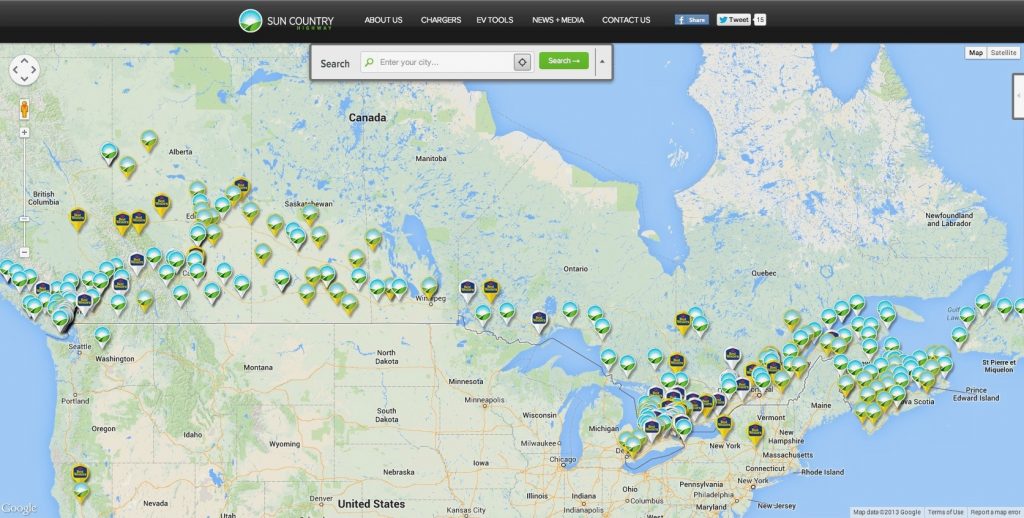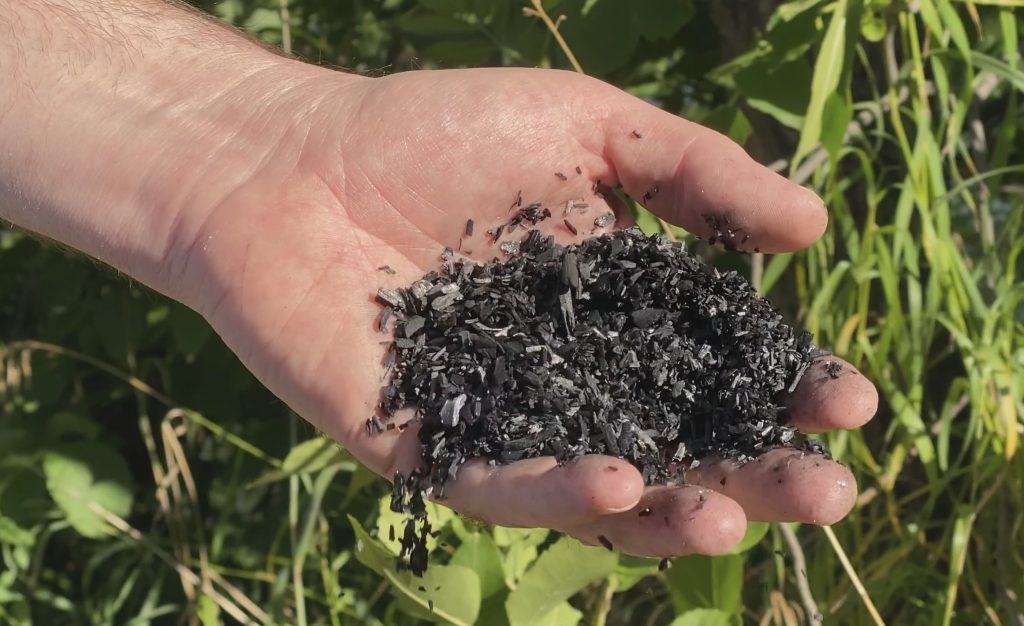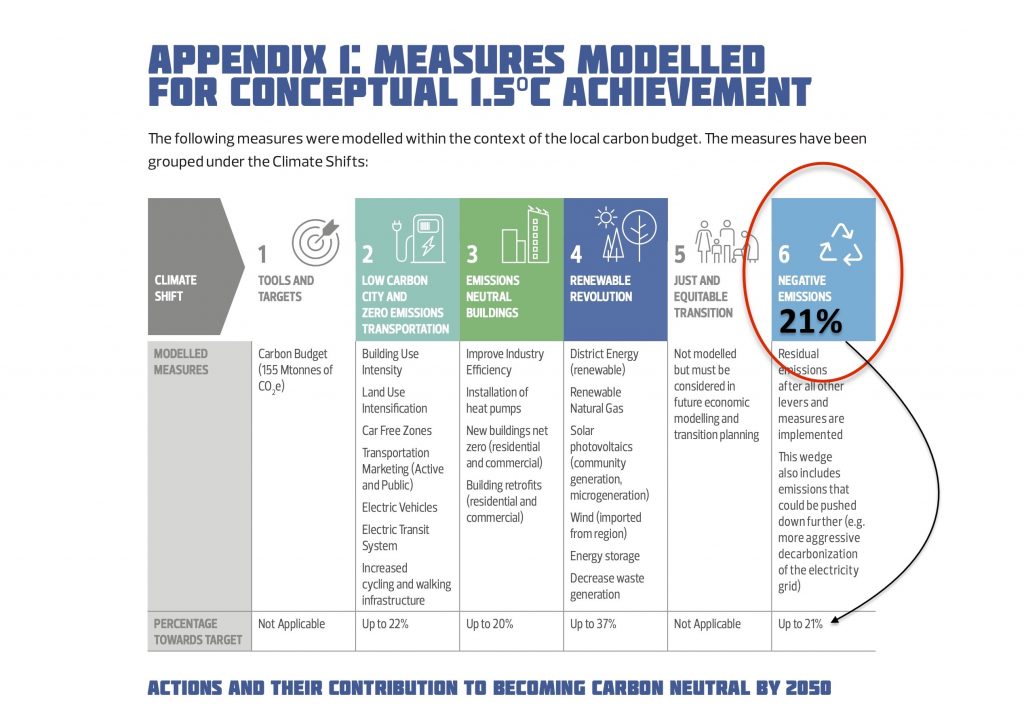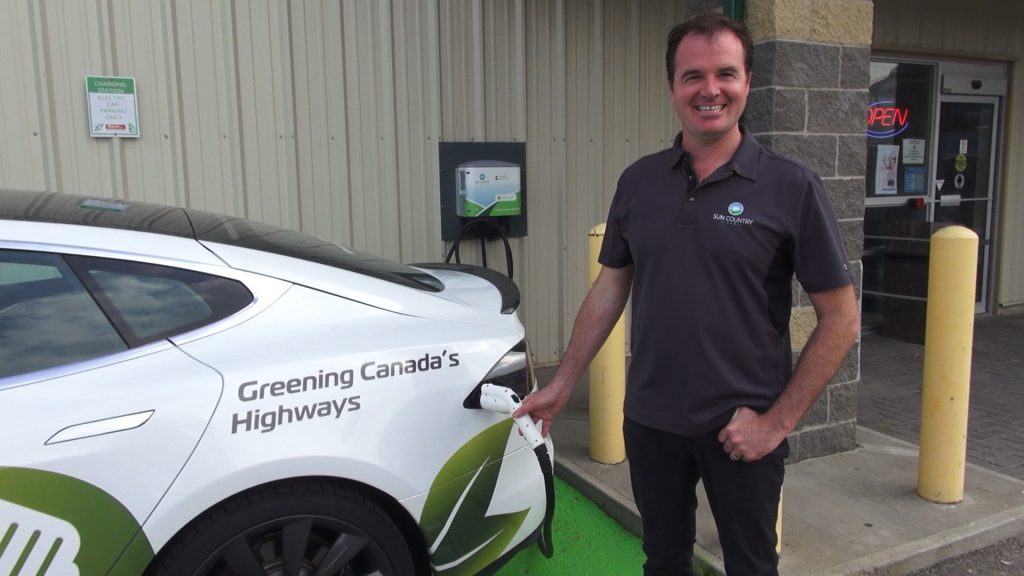Kent Rathewell calls it Carbon Plunk. More to the point he wants to create Carbon Plunk Parks to store carbon by planting trees and by plunking (sequestering) carbon back into the earth whence it came.
Rathwell has been working on this challenge for decades. He transformed Sun Country Farms into a zero-emissions wild birdseed company in Saskatoon, Canada, and then created the longest green highway in the world. You can use Sun Country Highway chargers for free and travel coast-to-coast in Canada, more than 10,000 km.

“For decades, I thought if the world could go carbon neutral, if I could prove that every sector of the economy could go carbon neutral, then then we’ll be good. The problem is, it’s taken too long, and carbon-neutral is not enough anymore,” says Rathwell.
“We can completely go carbon neutral around the world today, but yet we still have too much carbon in the atmosphere because the ice caps are melting, and the glaciers are melting, and ecosystems are being destroyed.”
As he did when he helped Tesla and the future of electric cars by creating the world’s longest green highway a decade ago, Rathwell has entered problem-solving mode. His big idea is to plug the gaping black hole of needed negative emissions.

The black hole comes from carbon modeling done by cities and states around the world. The learned that to contain climate change to the 1.5-degree threshold prescribed by the Paris Accord we need to do virtually everything: create zero-emissions buildings, zero-emissions transportation, and create zero-emissions energy. But even when we do all that we still need negative emissions to get to carbon neutrality.

Need negative emissions? Plunk that carbon back into the Earth
“We are about to launch the world’s first Carbon Plunk Park.”
Carbon Plunk, Rathwell’s latest entrepreneurial endeavour, is the creation of Carbon Plunk Parks “where trees are planted to capture the carbon from ‘carbon plunk’ points spread out all over the world.
“And whether you’re charging up an electric vehicle or manufacturing a good, we will quantify the carbon that is utilized in the energy and send [the data] back in real time to our Carbon Plunk Parks…to sequester it for hundreds of thousands of years.”
Kent went on to explain how this idea will work with electric vehicle charging stations like the ones Sun Country Highway installs.
“Imagine you plugging in your electric vehicle. The energy that goes into your car has different percentages of carbon attached to it, depending on its source. We measure that carbon and … send that carbon data to a Carbon Plunk Park, hopefully in a neighborhood near you, where we’re planting trees, and sequestering carbon back into Mother Earth where it came from.”
You might think, “Hey, that’s just tree planting!”—but there’s one key difference. Rathwell’s idea is to closely monitor carbon emissions in order to not just plant trees, but to plant the right number of trees and to combine it with carbon sequestration.
By monitoring carbon emissions at the carbon plunk points like, for example, an electric vehicle charging station, the park can plant enough trees and sequester enough carbon to render that vehicle not only carbon neutral, but potentially carbon negative.
Rathwell says that these “plunk points” can be integrated into any sector of the economy simply by monitoring and transmitting emissions data to the carbon plunk parks.
His vision is to create Carbon Plunk Parks around the world, and making emissions and reductions data visible to everyone who visits them. “We simply capture and sequester more than what’s emitted in all the sectors out there, whether it’s transportation, or manufacturing, or living.”

Good for the Birds and the Bees
“The carbon parks will also help the species that are in trouble: the pollinators; the bees, and the birds, and the butterflies. The populations are collapsing and there’s millions of species at risk due to climate change,” says Rathwell.
With the rapid global changes in climate, habitat, and species due to climate change, Rathwell is right when he says that this is a problem what will “change the lifestyles of our children beyond what we could even comprehend.”
Rathwell says these parks not only offer a solution, but they are also designed to instill hope. “This is really about solving climate change by planting trees. And before the carbon goes back up into the atmosphere, we sequester that carbon and put it back in the ground.”
So the next time your kid asks you, “What are we doing about climate change,” you have an answer—and you can all participate in a solution.
These days, Rathwell is very busy lining up sponsors and partners and promoting the construction of the first Carbon Plunk park. “Today,” says Rathwell, “you can be part of what I feel is one of the most logical solutions to climate change, which is very positive.”
If Rathwell’s track record is any indicator, whether you support this idea, drive an electric vehicle, or are simply worried about climate change, expect to hear much more about this idea in the months and years to come.





